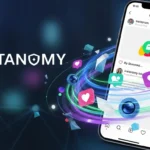Introduction
The New York Times Connections game has quickly become a favorite among puzzle lovers. Unlike traditional word games, Connections challenges players to group 16 seemingly unrelated words into four distinct categories. Its simplicity in design, combined with the challenge of spotting subtle associations, makes it both addictive and intellectually stimulating. Each day presents a new puzzle, keeping the experience fresh and engaging. Whether you’re a casual player looking for a daily mental workout or a competitive puzzle enthusiast, mastering Connections requires strategy, attention to detail, and creative thinking. Beyond its entertainment value, the game also enhances vocabulary, pattern recognition, and cognitive flexibility. In this article, we’ll explore the mechanics of Connections, share expert strategies, uncover variations and challenges, and answer common questions from players. By the end, you’ll be equipped to tackle every daily puzzle confidently and enjoyably.
Understanding the Game Mechanics
Connections is played on a 4×4 grid containing 16 words. The objective is to identify four groups of four words each, where the words in each group share a common theme. These themes may be simple, like colors or animals, or more abstract, such as idioms, homophones, or double-letter words.
Players have four attempts to correctly identify all groups. Each correct set reveals a color indicating its difficulty:
-
Yellow – easiest
-
Green – moderately easy
-
Blue – somewhat challenging
-
Purple – most difficult
The color system helps gauge progress and adds a strategic layer to the gameplay. The challenge lies in spotting subtle or less obvious connections, which keeps players mentally engaged.
Core Strategies for Success
1. Start With the Most Obvious Groups
Identify the categories you can quickly recognize. Securing an easy group first reduces the number of potential words remaining, narrowing down the possibilities for the harder groups.
2. Look for Patterns Beyond Words
Many puzzles require identifying patterns such as synonyms, antonyms, word origins, or double letters. Always consider less obvious linguistic connections.
3. Avoid Common Phrase Bias
Don’t assume words that often appear together belong in the same category. They might actually belong to separate groups, requiring you to think beyond the obvious.
4. Use the Shuffle Feature Strategically
Rearranging the words can help your brain spot connections that weren’t obvious initially. This is especially useful when you feel stuck.
5. Practice Daily
Regular gameplay hones your pattern recognition, vocabulary, and analytical thinking. Over time, even the trickiest categories will become easier to identify.
Common Puzzle Variations
The New York Times occasionally releases special editions to keep the game fresh. Some variations include:
-
Emoji puzzles: Words are replaced with emojis, challenging players to identify the underlying concept.
-
Themed challenges: Seasonal or holiday-related words add a creative twist.
-
Timed modes: Some variations introduce time limits to increase the challenge.
These variations test flexibility and problem-solving skills, encouraging players to approach each puzzle differently.
Advanced Tips for Experienced Players
-
Categorize Mentally Before Selecting: Take a moment to visualize potential categories before clicking. This reduces mistakes.
-
Think Outside the Box: Consider abstract connections like historical figures, scientific terms, or literary references.
-
Keep a Word Bank: Tracking recurring themes and categories across days can help identify patterns.
-
Double-Check Before Submitting: Sometimes one word may fit two possible groups. Choosing wisely prevents wasted attempts.
-
Collaborate Occasionally: Discussing with friends can reveal alternative connections you might have overlooked.
Benefits of Playing Connections
-
Cognitive Stimulation: Enhances problem-solving, memory, and critical thinking.
-
Vocabulary Expansion: Introduces new words and phrases daily.
-
Stress Relief: Focused gameplay encourages mindfulness and concentration.
-
Social Engagement: Sharing strategies or competing with friends adds a social element.
Connections is more than a game; it’s a brain-boosting daily ritual.
Frequently Asked Questions (FAQs)
1. How do I play the New York Times Connections game?
Start with the 4×4 grid of 16 words. Group them into four categories of four words each. You have four attempts to complete the puzzle.
2. What do the color codes in the game mean?
Colors indicate difficulty: Yellow (easy), Green (moderate), Blue (challenging), Purple (hardest).
3. Can I play Connections offline?
No. The game requires an internet connection through the New York Times Games website or mobile app.
4. How often is a new puzzle released?
A new puzzle is released daily, ensuring a fresh challenge every day.
5. Any tips for beginners?
Start with easy groups, focus on word meanings, and use the shuffle feature when stuck. Daily practice improves speed and accuracy.
Read More: Mastering NYT Connections: Expert Strategies and Tips
Conclusion
The New York Times Connections game is a brilliant blend of fun, challenge, and cognitive exercise. Its simple interface hides a deeply engaging puzzle experience that tests your analytical skills, vocabulary, and creative thinking. By understanding the game mechanics, applying strategic techniques, and practicing regularly, players can elevate their puzzle-solving abilities. Connections also fosters mental agility and problem-solving confidence, making it a perfect daily ritual for enthusiasts of all levels. The variations and special editions ensure that every day brings a new twist, keeping players excited and engaged. Whether you play casually for entertainment or competitively for mastery, Connections delivers a rewarding and intellectually stimulating experience. With patience, practice, and a keen eye for subtle patterns, you can master the game and enjoy the satisfaction of uncovering hidden connections, one word group at a time.










